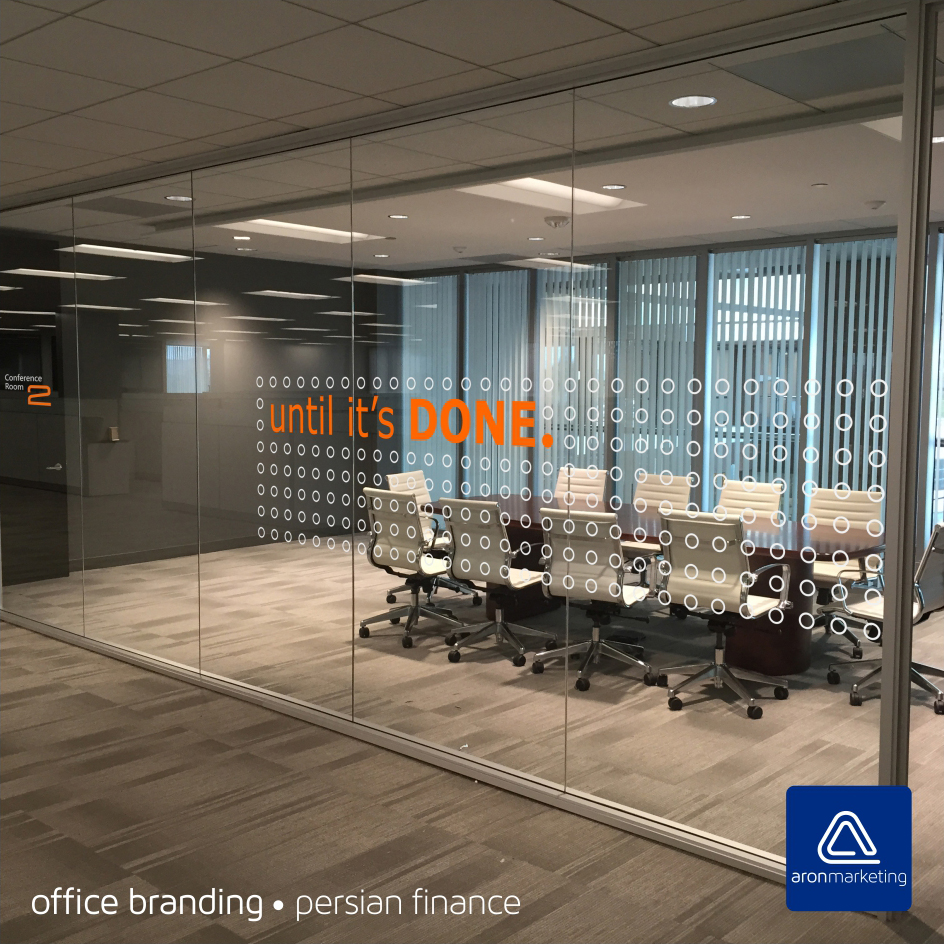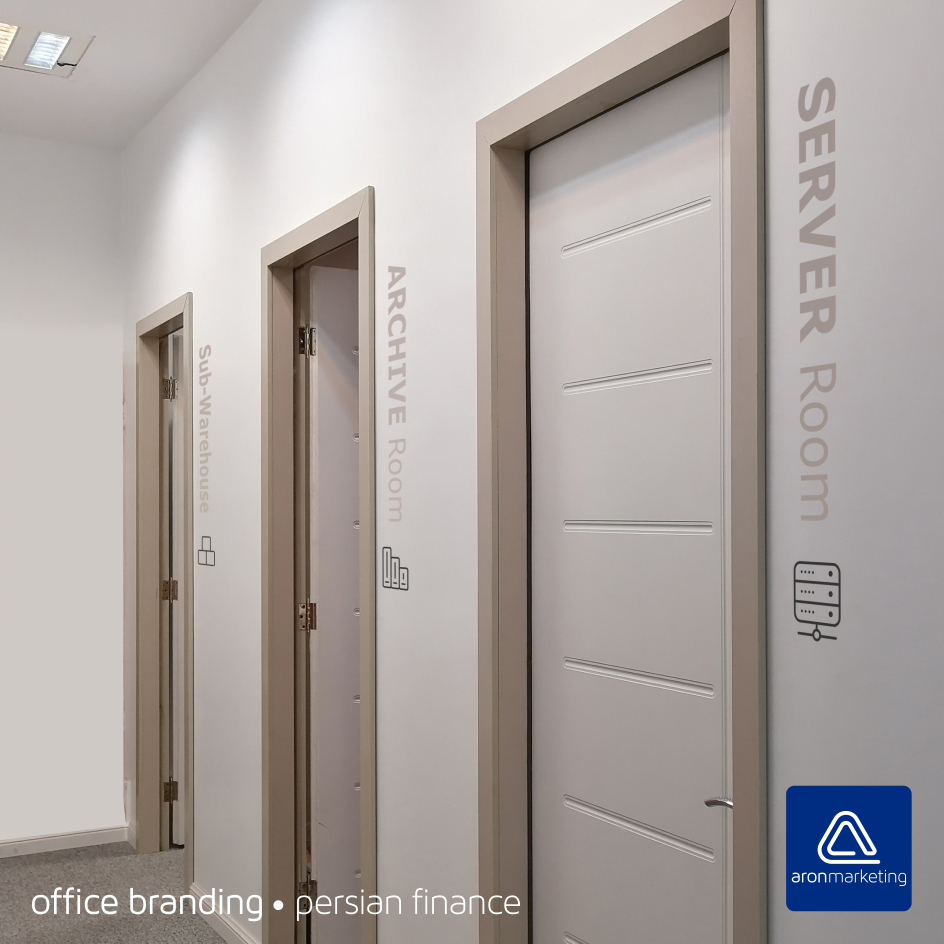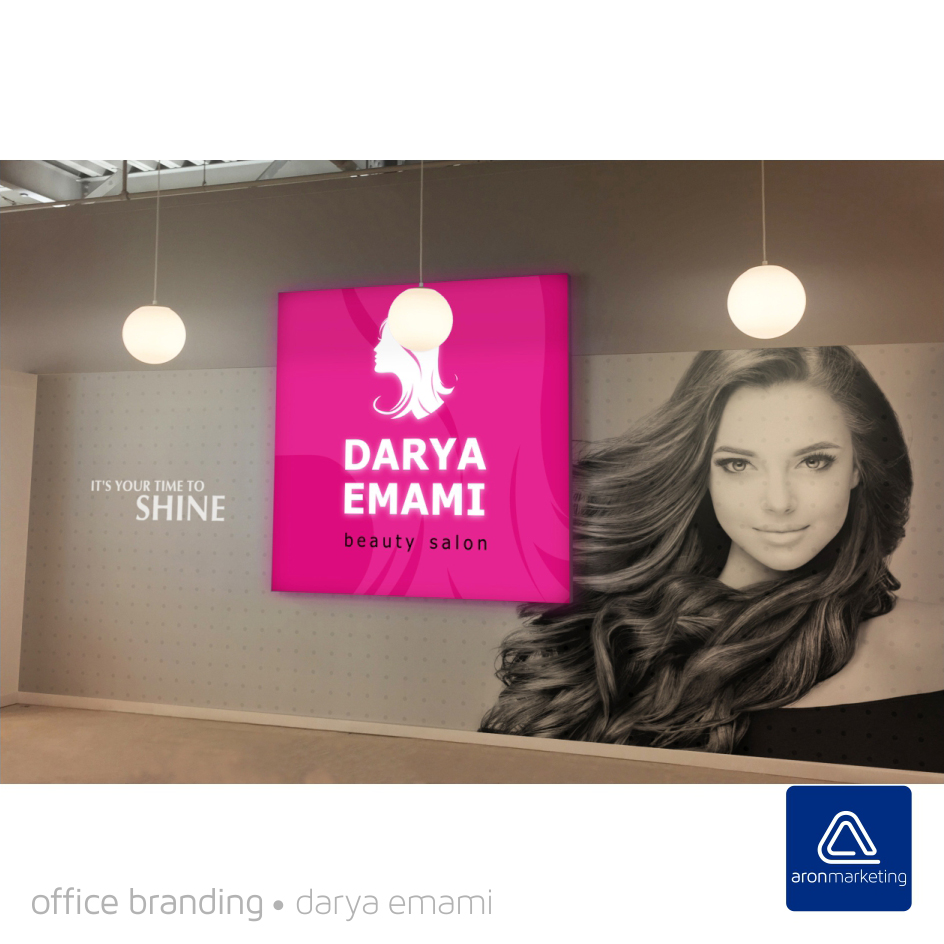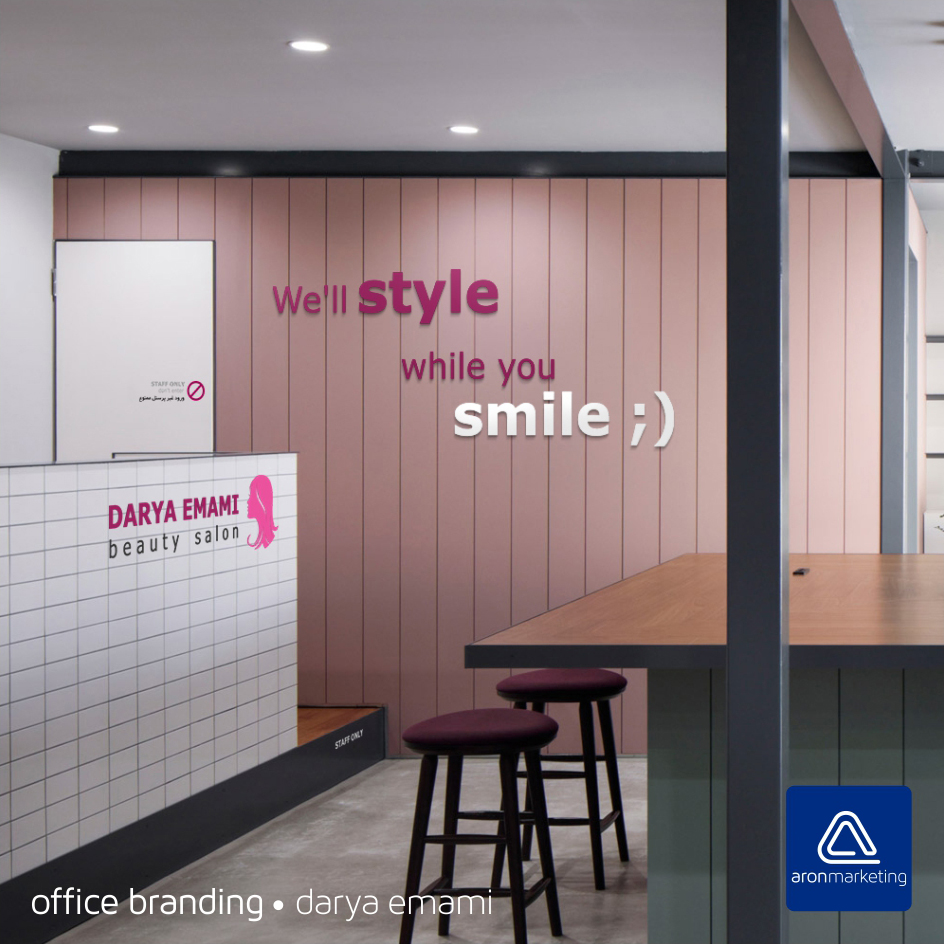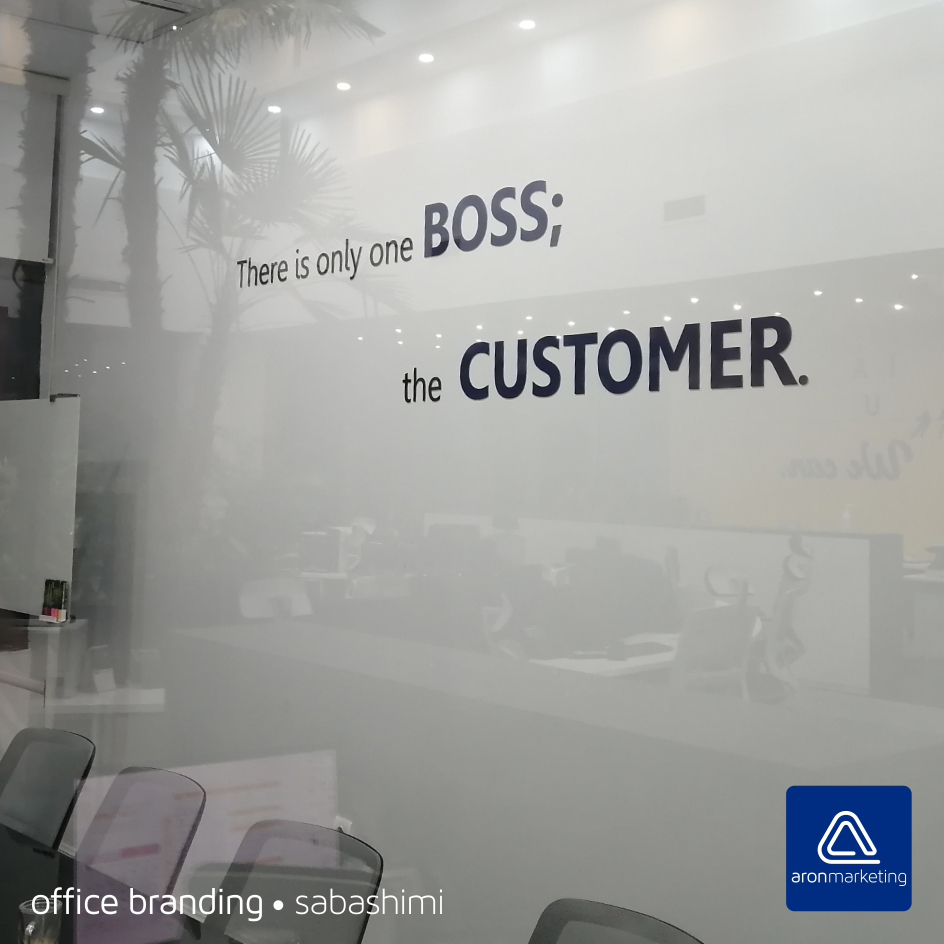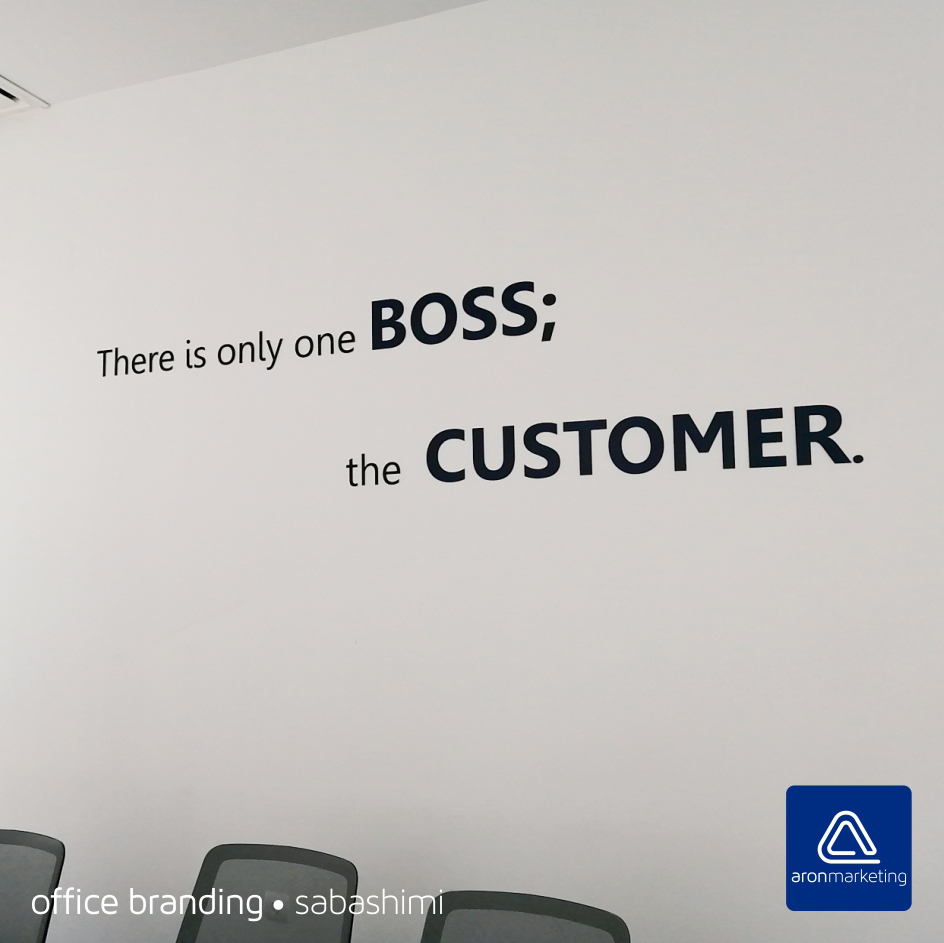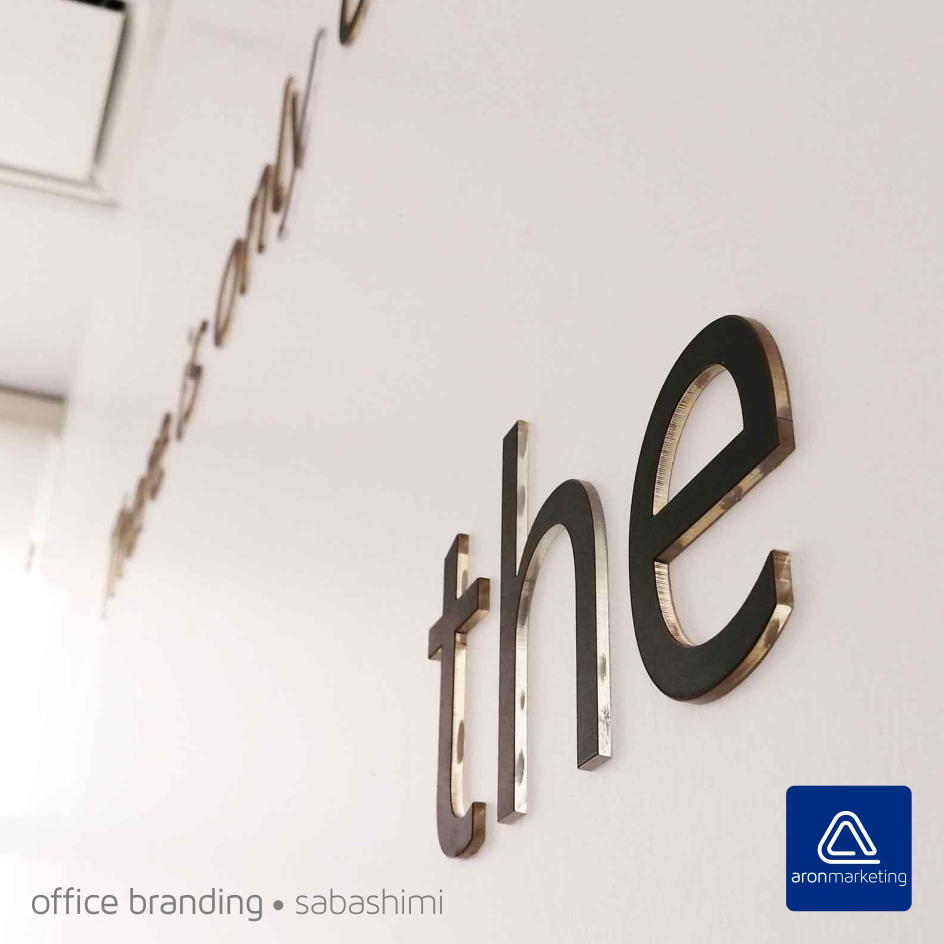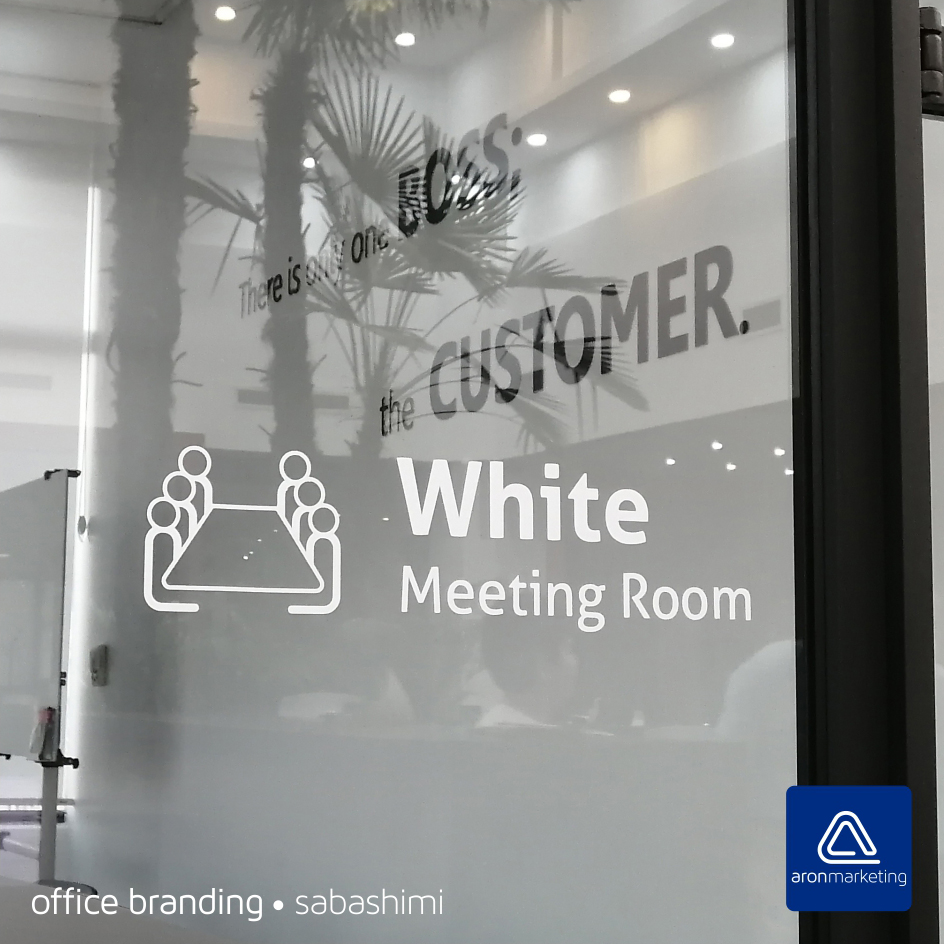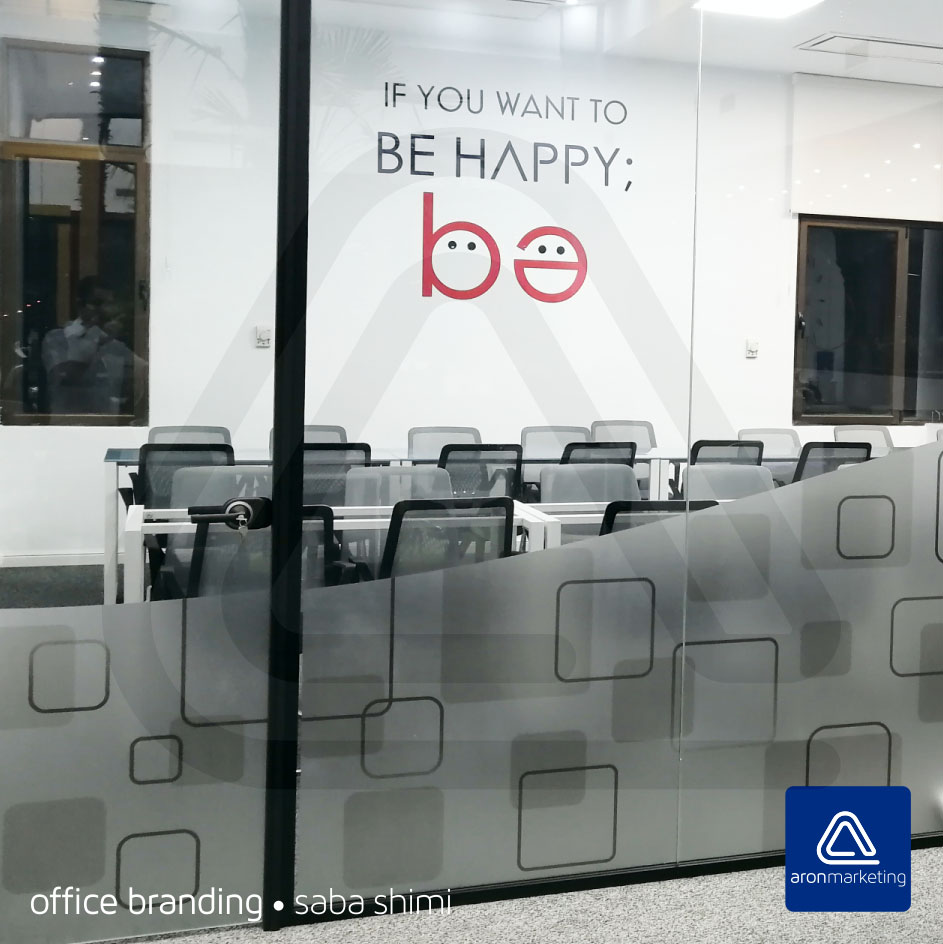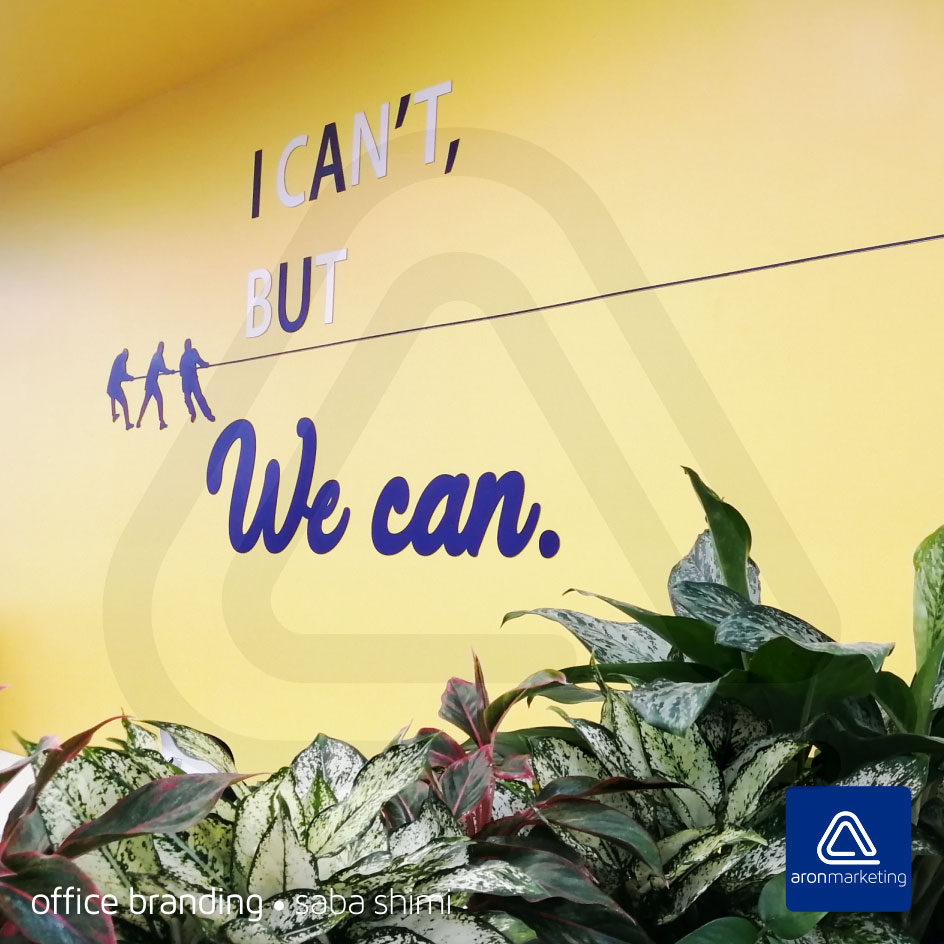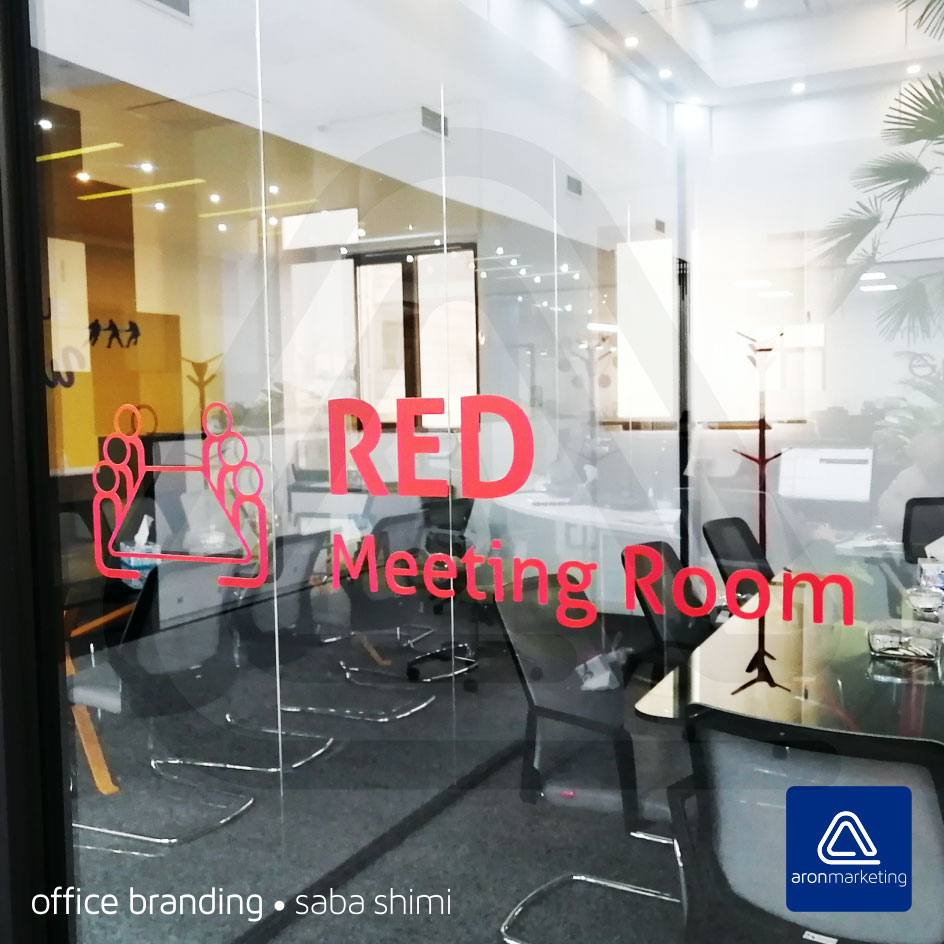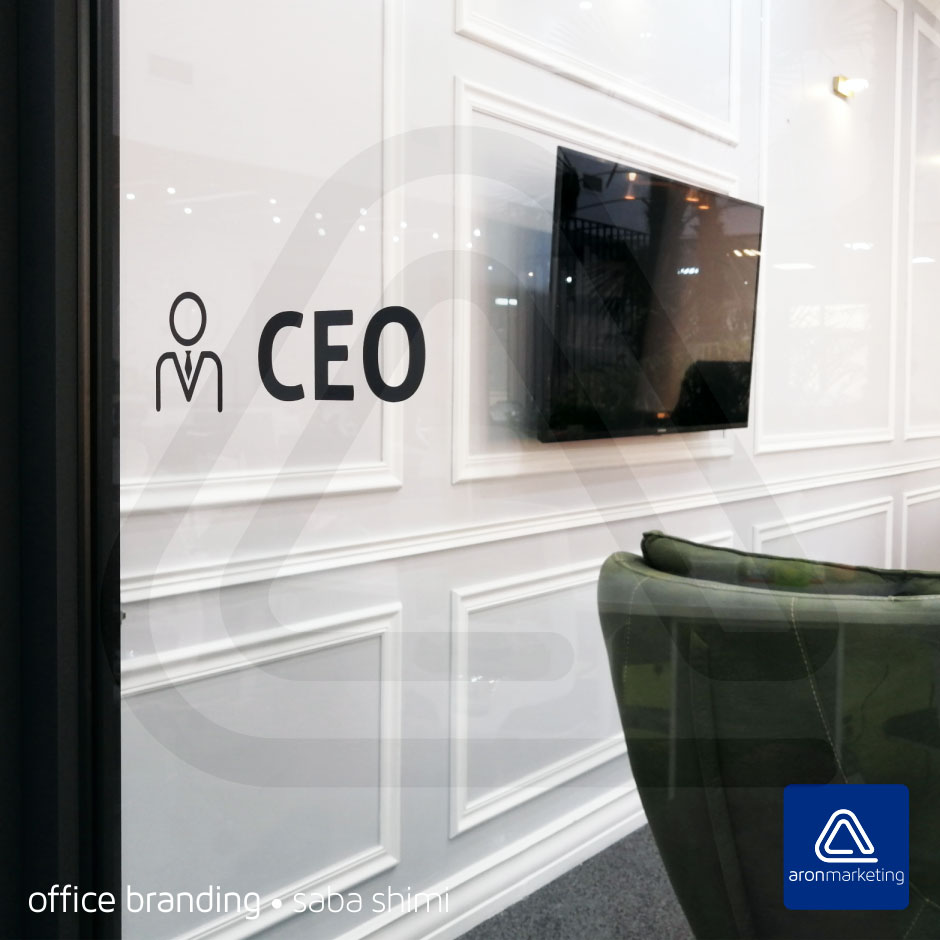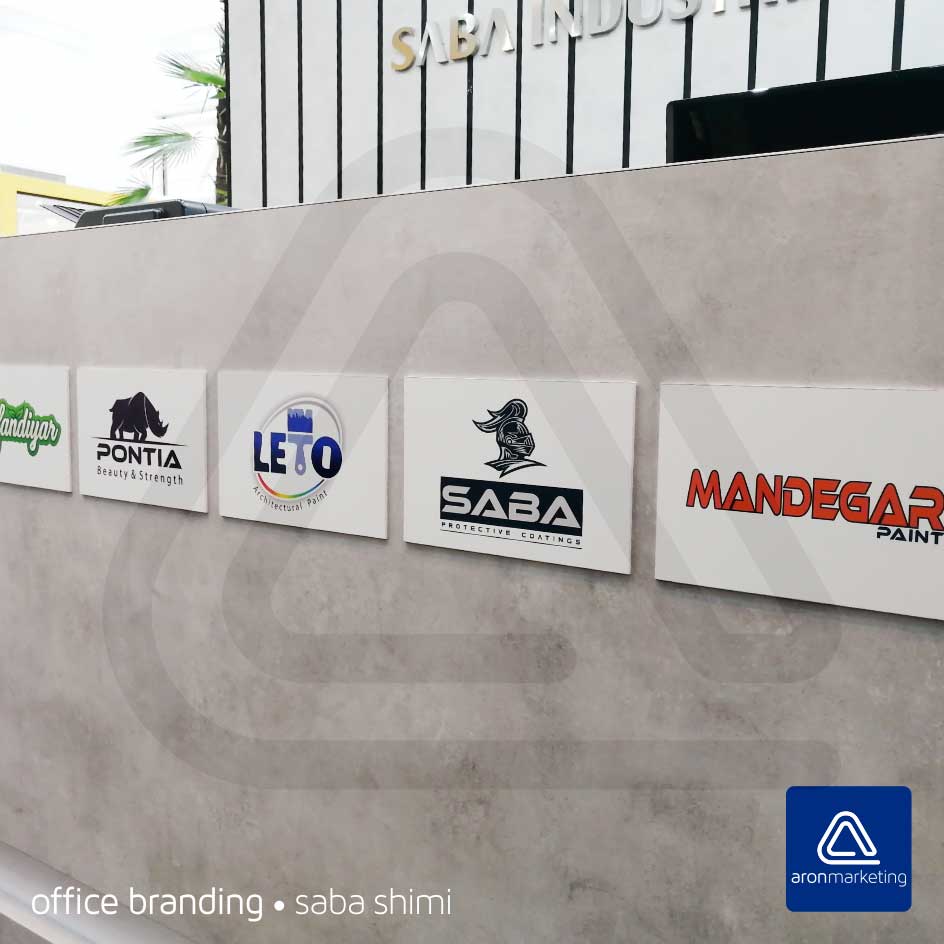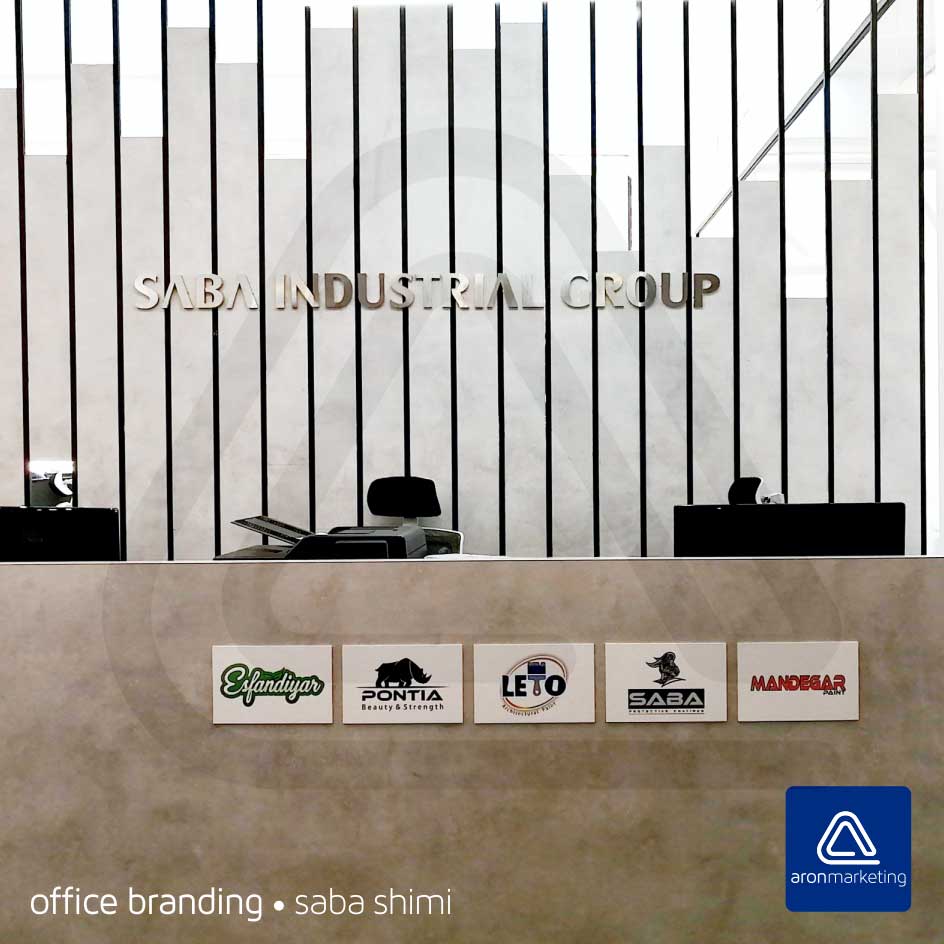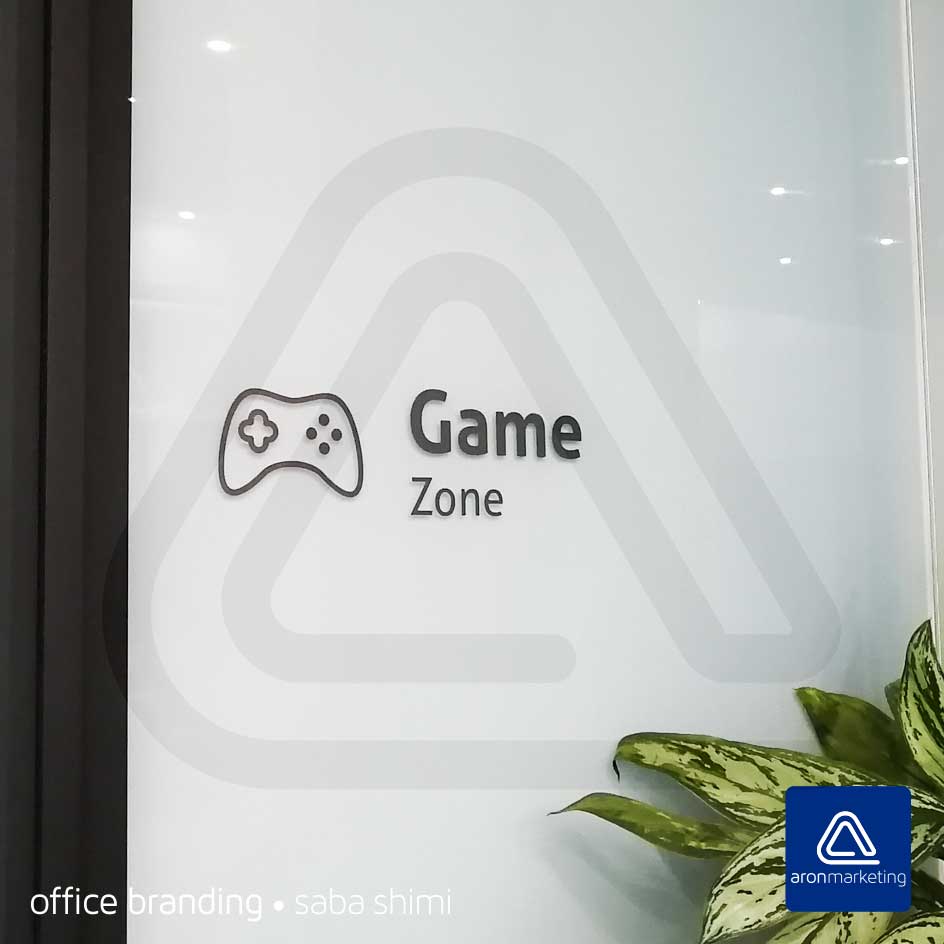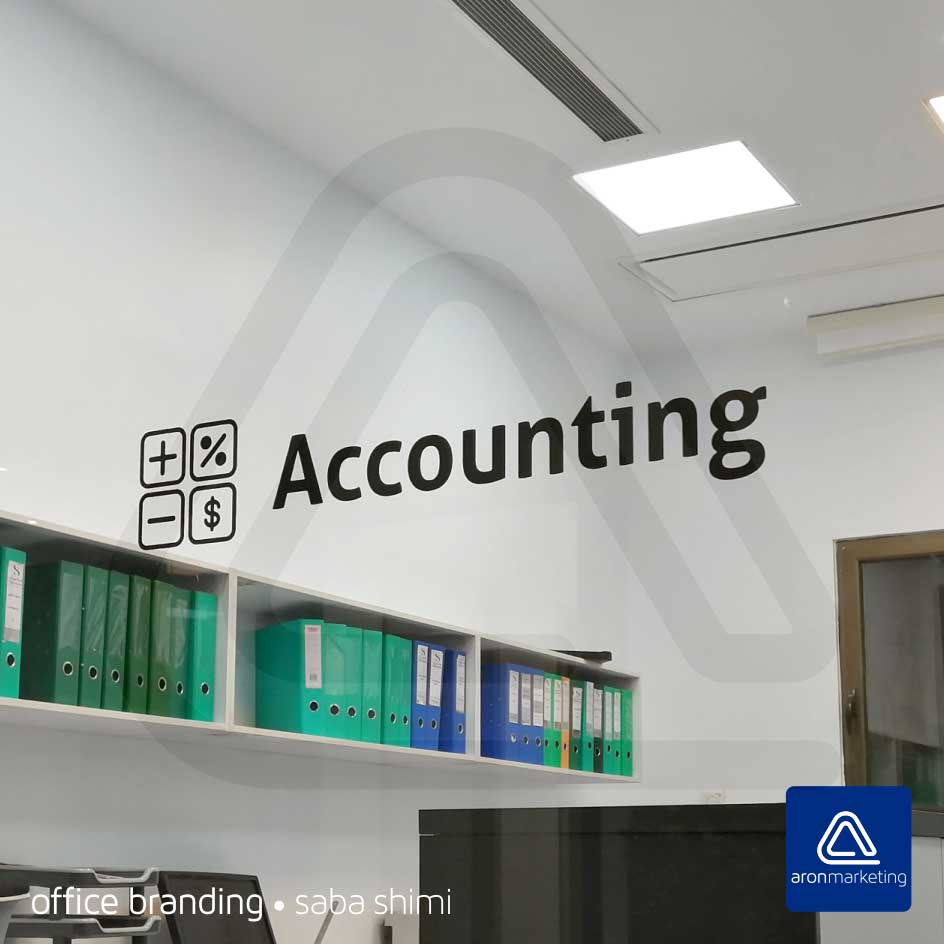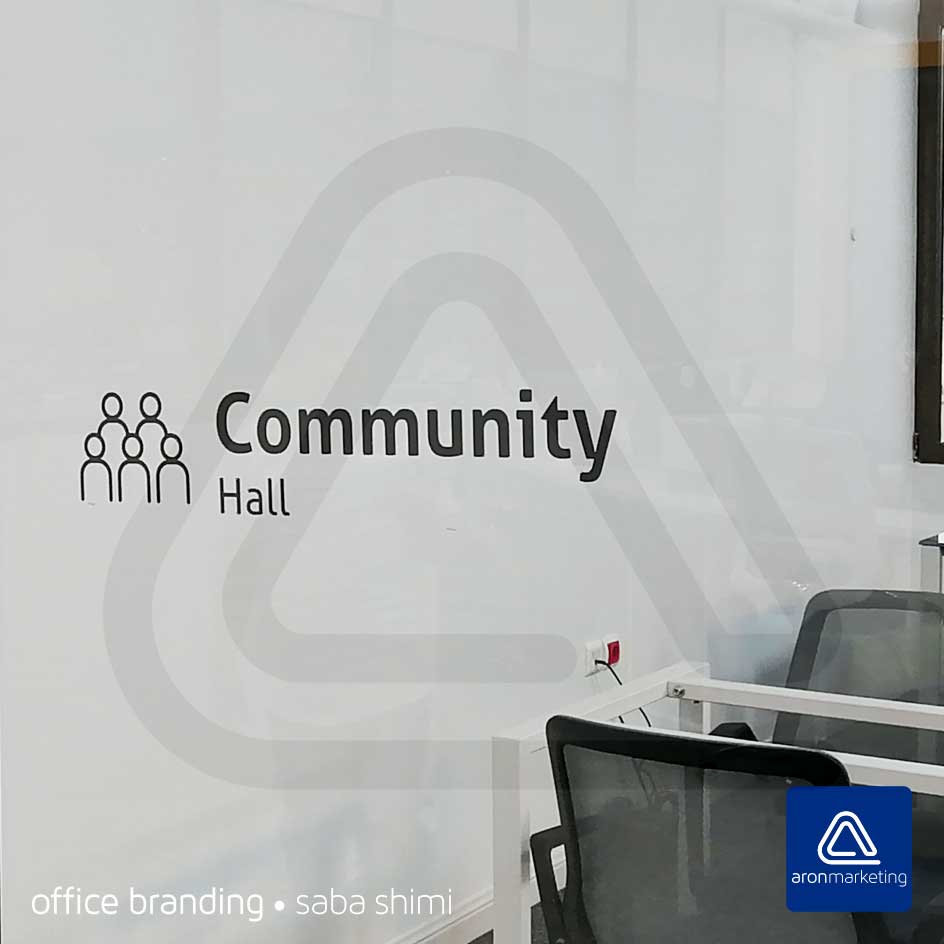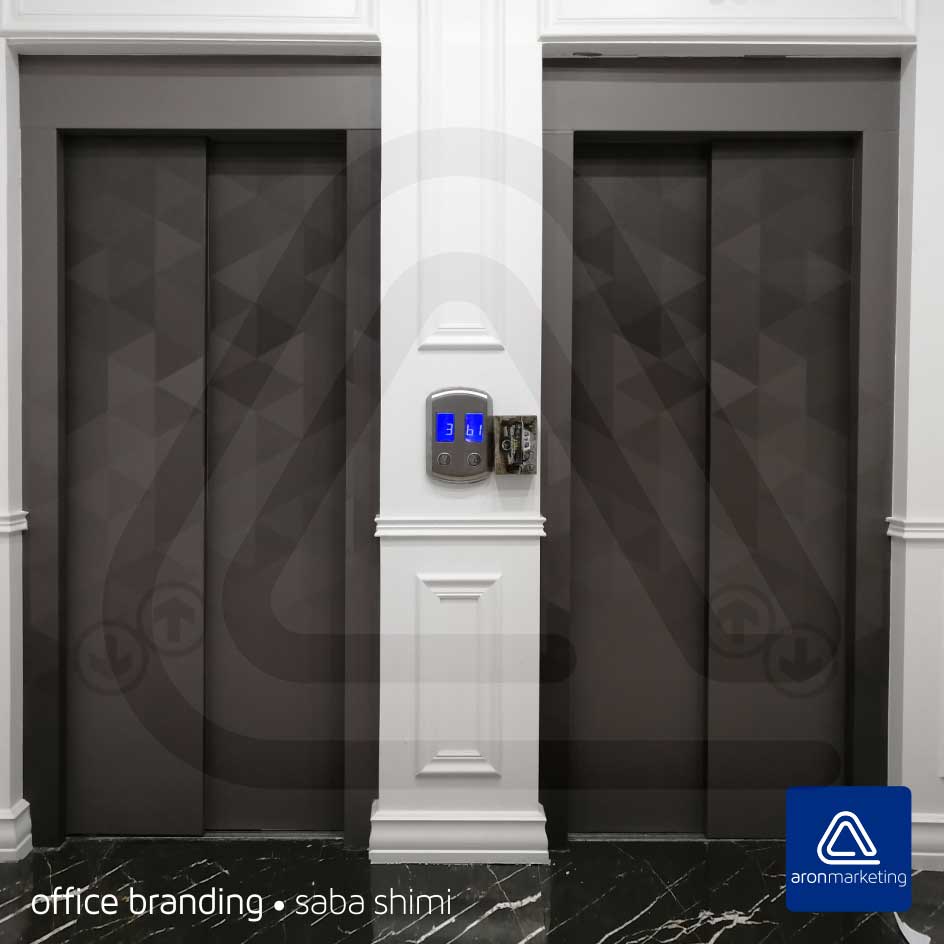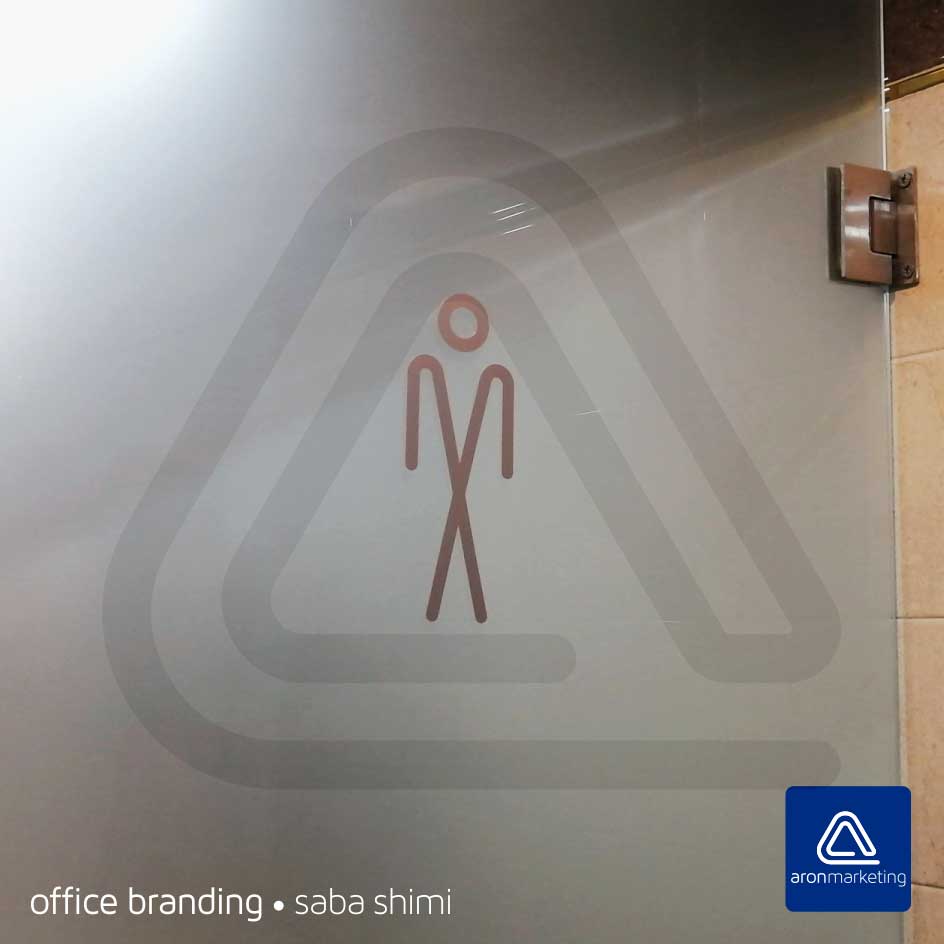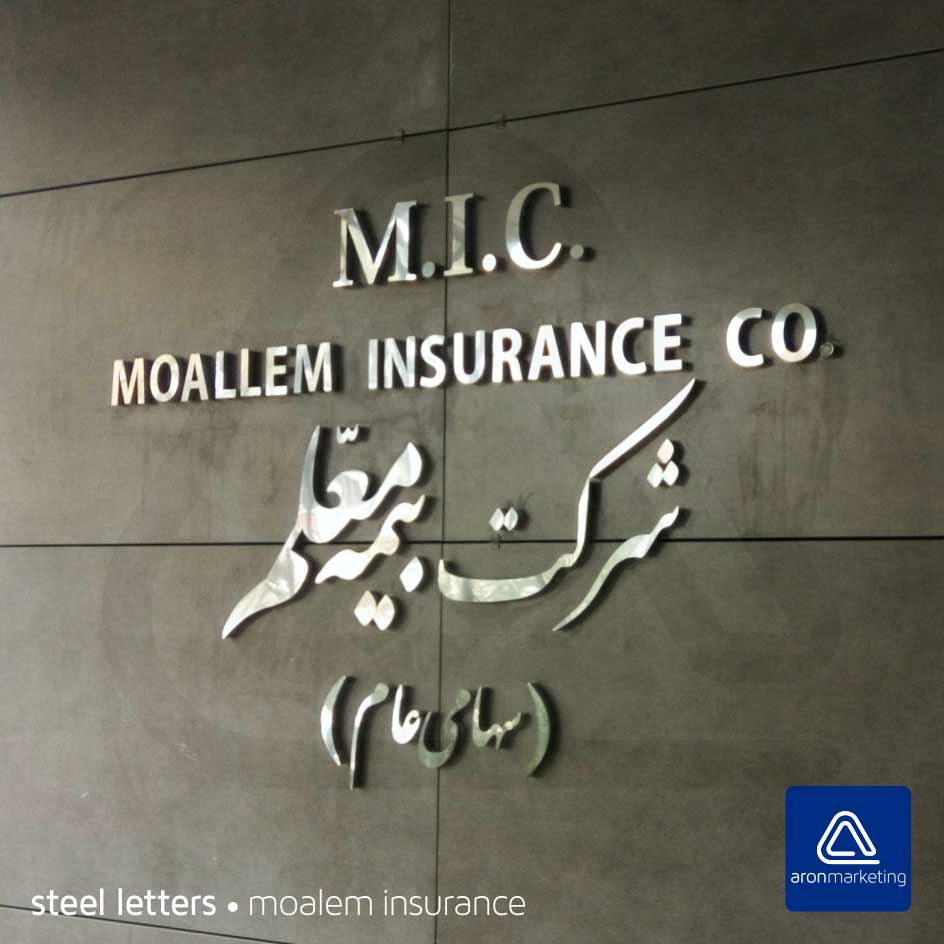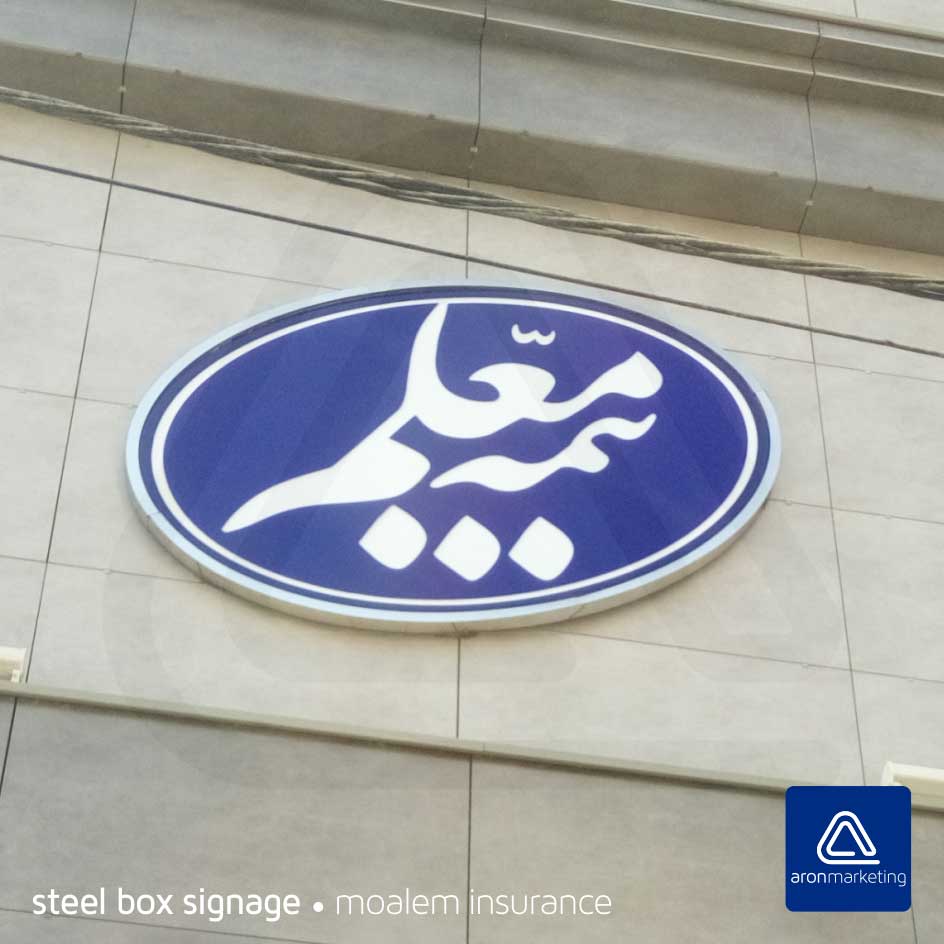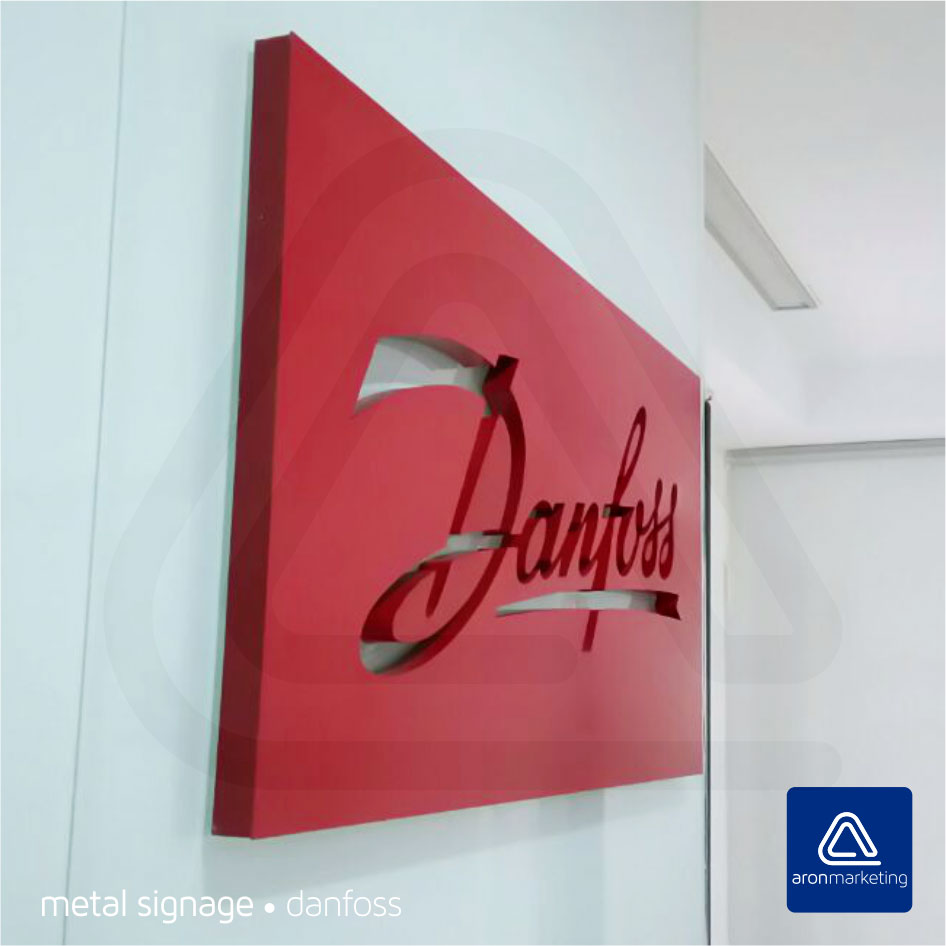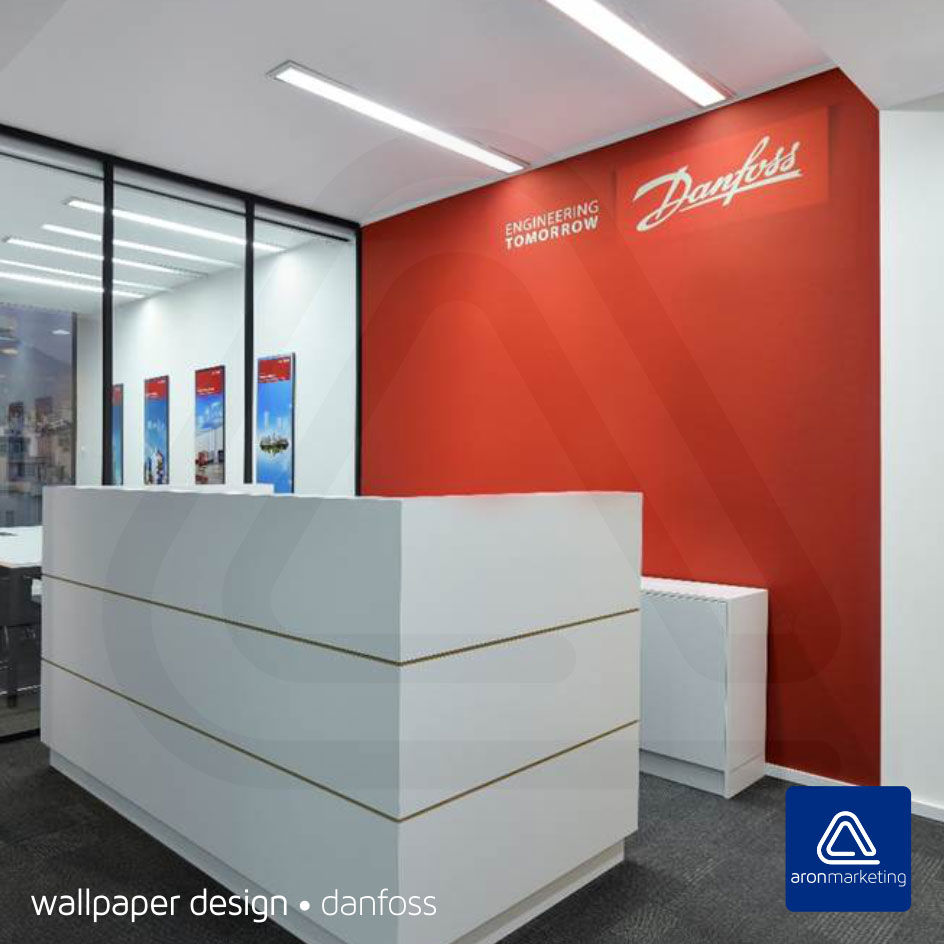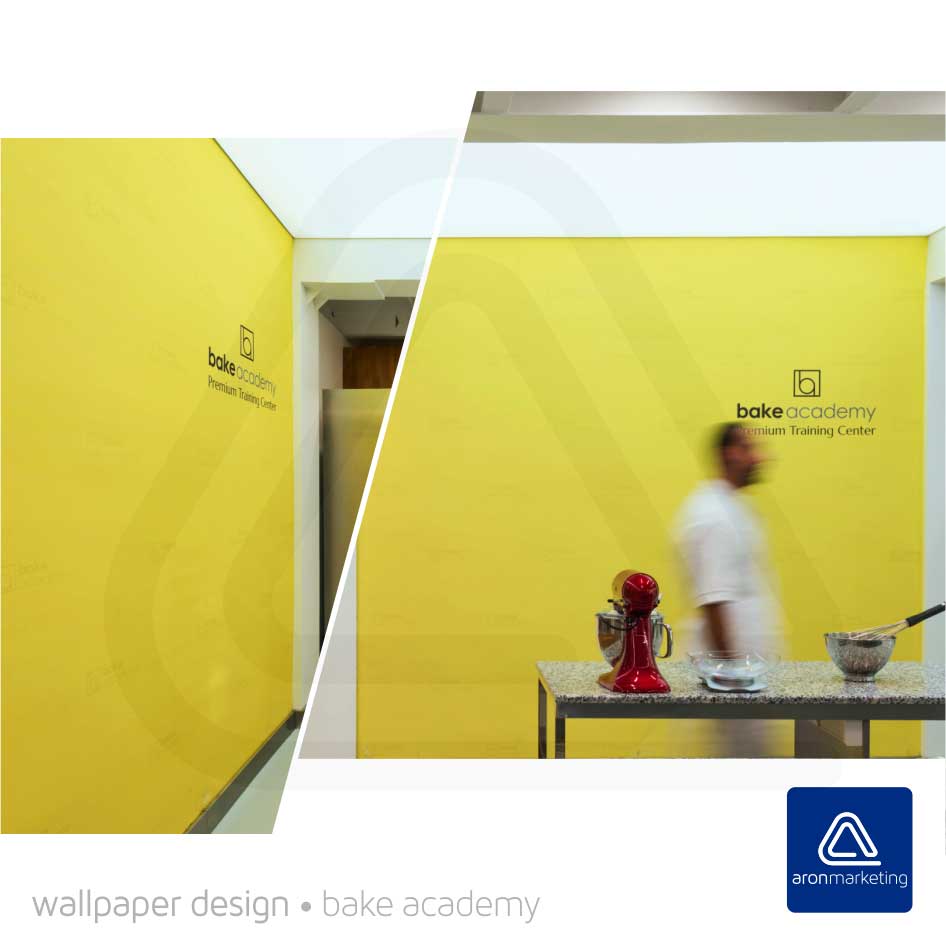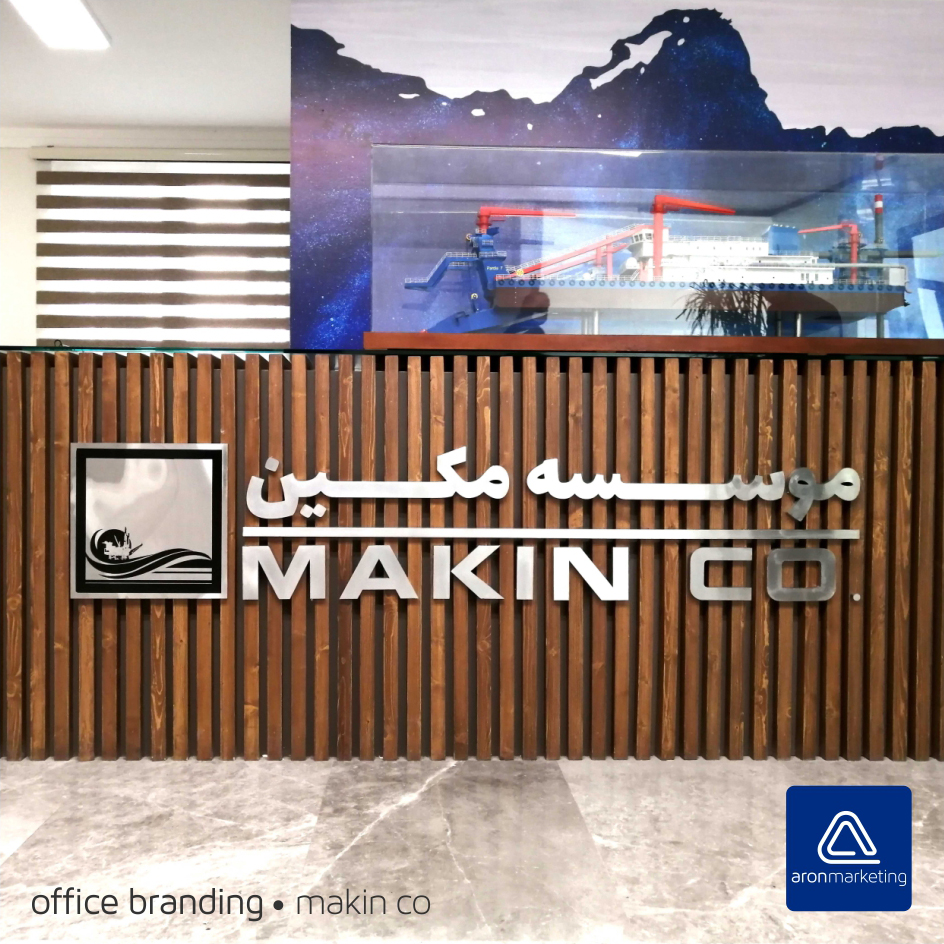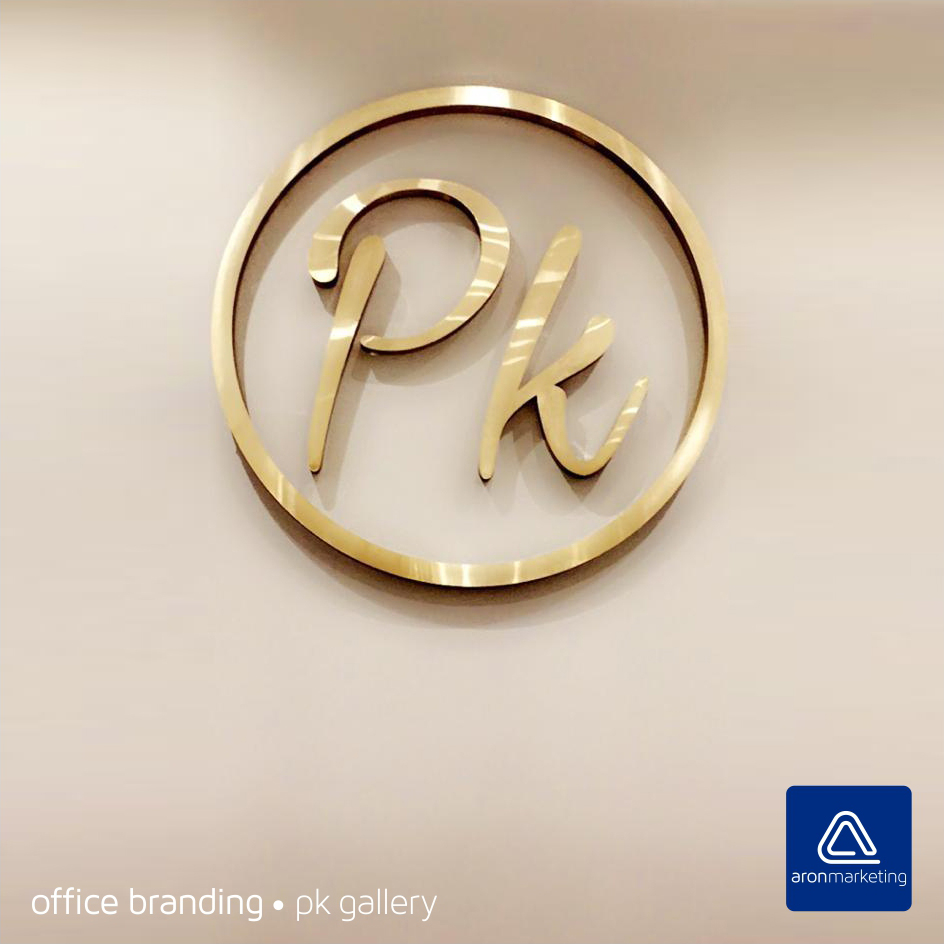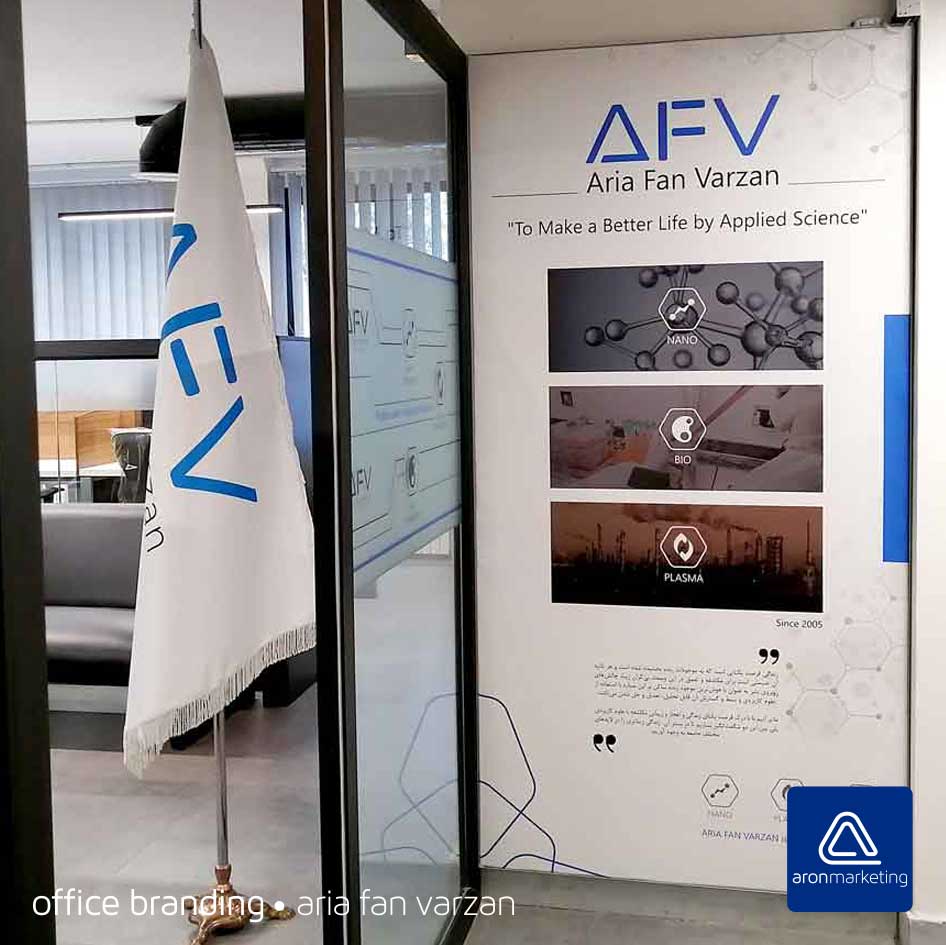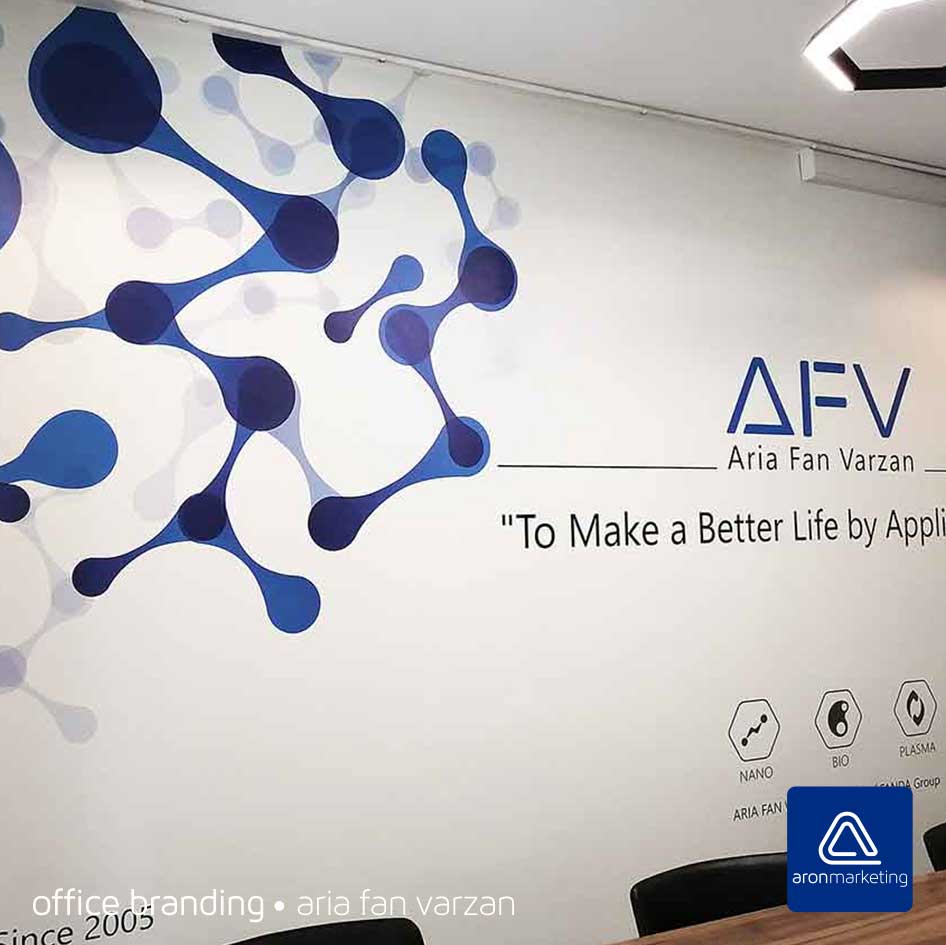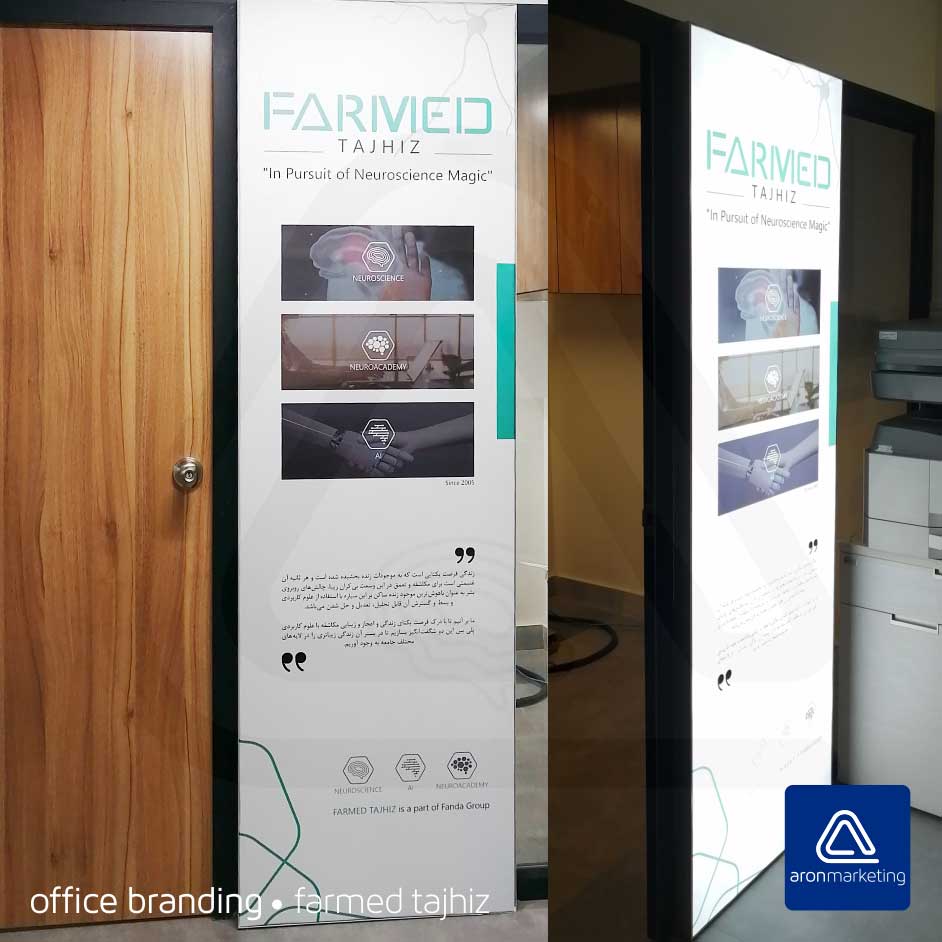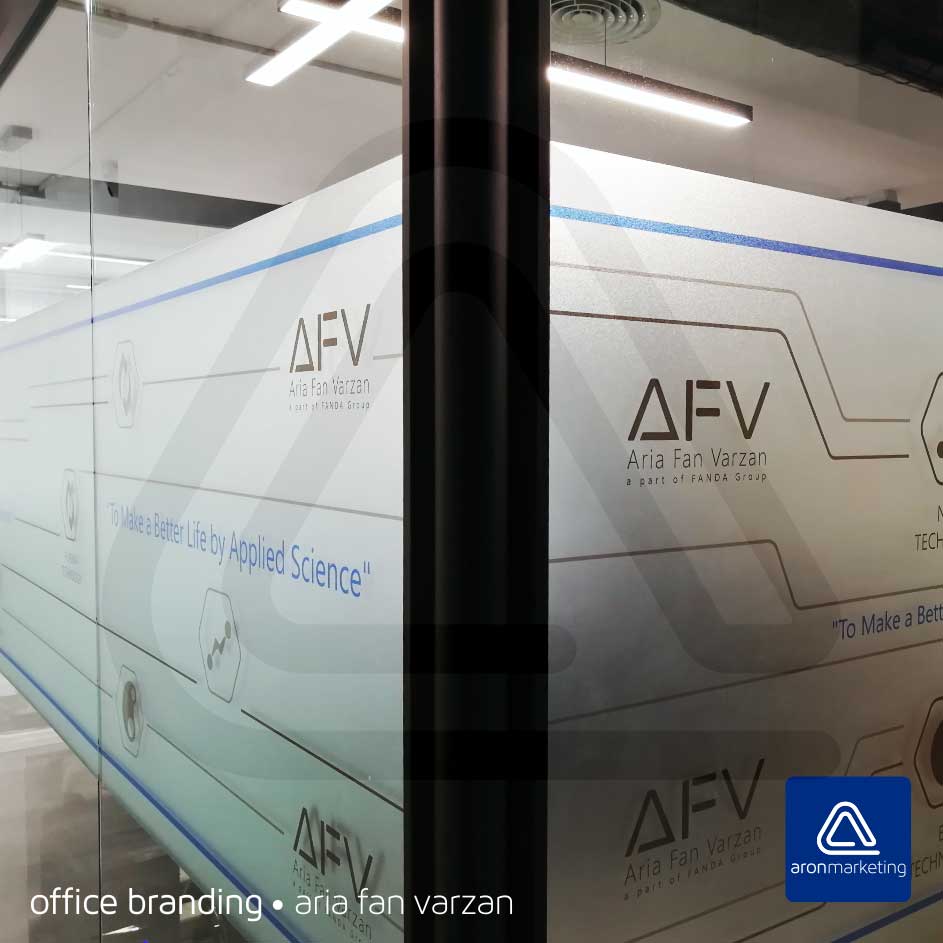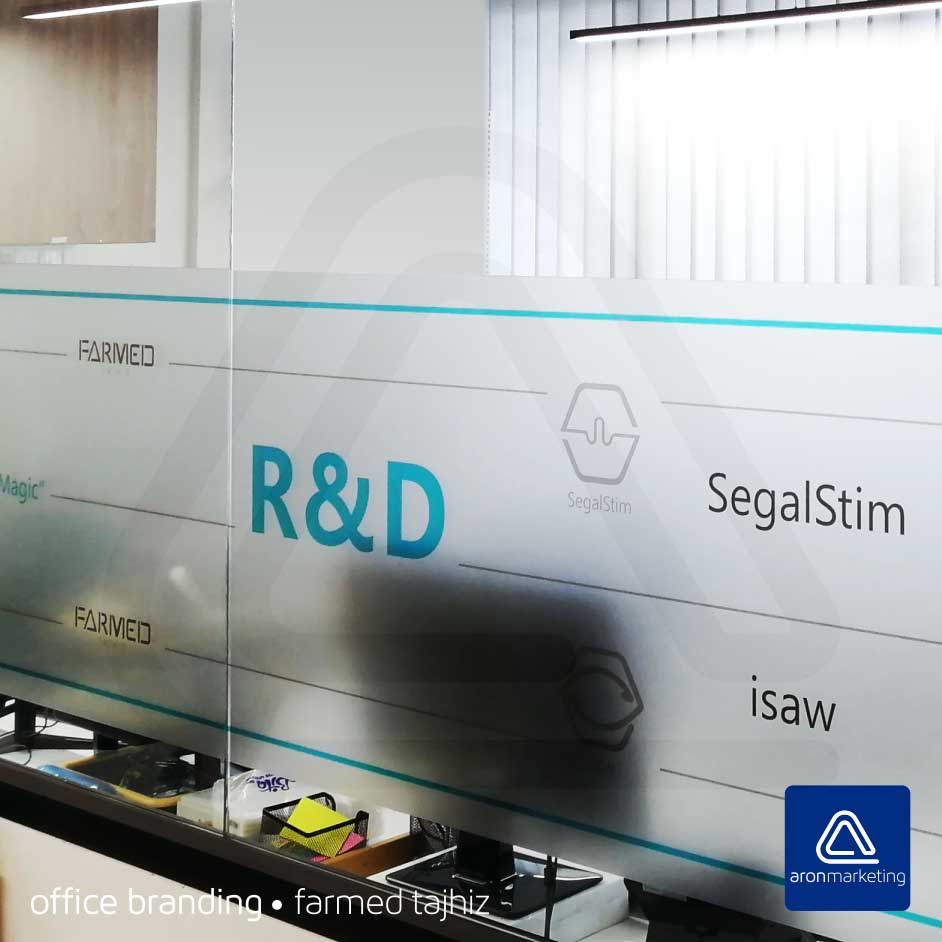Office Branding
What is Office Branding?
Office branding refers to the process of creating a consistent and cohesive visual identity for an office space. It involves using various design elements, such as logos, color schemes, typography, and graphics, to reflect a company’s brand identity and values throughout the office environment. Office branding aims to create a unique and memorable experience for employees and visitors, reinforcing the company’s brand image and fostering a sense of belonging and pride among employees. This can include elements such as branded signage, wall graphics, furniture, artwork, and other visual elements that align with the company’s brand guidelines.

What we do in Office Branding?
Environmental development of the brand
Developing brand identity, brand values and other brand elemnts on office or manufacture space. this help brands to deliver their brand values and identity to clients and employees
Wayfinding
Planning, design, create and install all the graphic elements to spaces in order to showing special spaces or guiding people to particular spaces or parts of a building or office.
Space decoration
Decorating spaces by brand elements, slogans, histories, trophies, quotes and other brand-related elements for improve brand communication and employees productivity
Wall branding
decorating walls with bran-related elements, space name, quotes, graphic elements etc.
Window branding
decorating windows with bran-related elements, space name, quotes, graphic elements etc.
Indoor / outdoor
development brand identity and values in all indoor and outdoor spaces of a company or other buildings.
Why you need Office Branding?
Brand Consistency
branded office helps to ensure that the company’s brand identity is consistently represented across all touchpoints, including the physical office space. This consistency builds trust and recognition among employees and visitors, strengthening the brand’s overall image.
Employee engagement and motivation
A well-branded office space can create a positive and inspiring work environment, which can boost employee morale and motivation. When employees feel connected to the company’s brand, they are more likely to feel a sense of pride and loyalty, leading to increased productivity and job satisfaction.
Client perception
The office space is often the first impression that clients or potential clients have of a company. A visually appealing and well-branded office can convey professionalism, creativity, and attention to detail, which can positively impact client perception and help to attract and retain clients.
Company culture and values
Office branding can visually communicate a company’s culture and values to employees and visitors. By incorporating elements that reflect the company’s mission, vision, and core values, the office space becomes a tangible representation of the company’s identity, fostering a sense of belonging and shared purpose among employees.
Differentiation
In a competitive market, It can help a company stand out from its competitors. A unique and memorable office space can leave a lasting impression on clients, potential employees, and other stakeholders, setting the company apart from others in the industry.
Why you need Office Branding?
Office branding helps to ensure that the company’s brand identity is consistently represented across all touchpoints, including the physical office space. This consistency builds trust and recognition among employees and visitors, strengthening the brand’s overall image.
A well-branded office space can create a positive and inspiring work environment, which can boost employee morale and motivation. When employees feel connected to the company’s brand, they are more likely to feel a sense of pride and loyalty, leading to increased productivity and job satisfaction.
The office space is often the first impression that clients or potential clients have of a company. A visually appealing and well-branded office can convey professionalism, creativity, and attention to detail, which can positively impact client perception and help to attract and retain clients.
It also can visually communicate a company’s culture and values to employees and visitors. By incorporating elements that reflect the company’s mission, vision, and core values, the office space becomes a tangible representation of the company’s identity, fostering a sense of belonging and shared purpose among employees.
In a competitive market, it can help a company stand out from its competitors. A unique and memorable office space can leave a lasting impression on clients, potential employees, and other stakeholders, setting the company apart from others in the industry.
Logo
The logo is a central component of a company’s brand identity and is often prominently displayed throughout the office space.
Imagery
High-quality images and visuals that align with the brand’s aesthetic and values can be used throughout the office space to enhance the brand experience.
Employee Branding
Office branding also involves engaging employees in the brand identity. This can include providing branded uniforms or name tags, creating an internal brand culture, and training employees to be brand ambassadors.
Adaptability
Office branding should also be adaptable to changes in the business or industry. This includes the ability to update signage, graphics, or messaging as needed to stay relevant and aligned with the brand’s evolution.
What are the Office Branding Components?
Color Palette
A consistent color palette is used to create a cohesive visual experience and reinforce the brand identity. This includes the use of brand colors in signage, graphics, furniture, and decor.
Messaging
Clear and consistent messaging is an important component of office branding. This includes mission statements, taglines, and key brand messages that are displayed through signage, posters, or digital displays.
Customer Experience
The office space and its branding components should also contribute to a positive customer experience. This can include creating welcoming reception areas, comfortable meeting spaces, or interactive displays that engage visitors.
Typography
The choice of fonts and typography used in office branding helps to convey the brand’s personality and style.
Tone of Voice
The tone of voice used in written communication, such as emails, internal memos, or marketing materials, should reflect the brand’s personality and values.
Consistency
Consistency is key in office branding. All branding components should work together cohesively to create a unified brand experience that is recognizable and reinforces the desired brand image.
Office Branding Components?
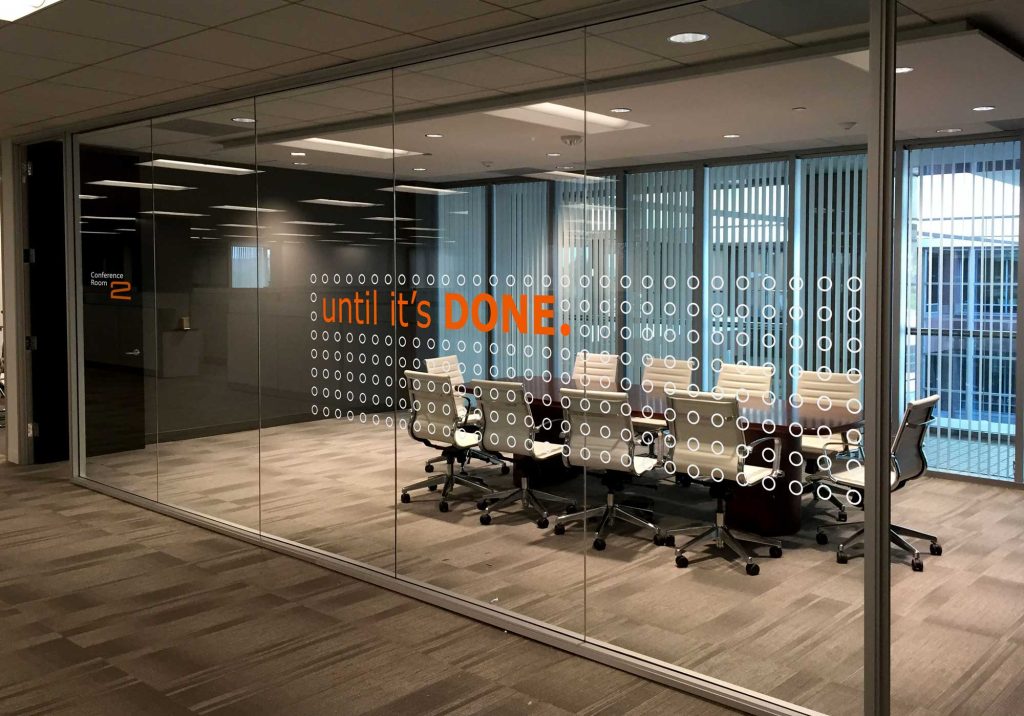
The logo is a central component of a company’s brand identity and is often prominently displayed throughout the office space.

A consistent color palette is used to create a cohesive visual experience and reinforce the brand identity. This includes the use of brand colors in signage, graphics, furniture, and decor.
The choice of fonts and typography used in office branding helps to convey the brand’s personality and style.
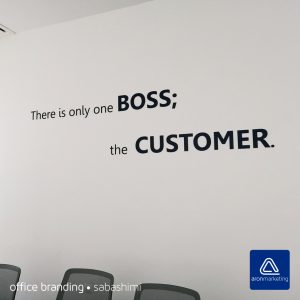
High-quality images and visuals that align with the brand’s aesthetic and values can be used throughout the office space to enhance the brand experience.
Clear and consistent messaging is an important component of office branding. This includes mission statements, taglines, and key brand messages that are displayed through signage, posters, or digital displays.
The tone of voice used in written communication, such as emails, internal memos, or marketing materials, should reflect the brand’s personality and values.
Office branding also involves engaging employees in the brand identity. This can include providing branded uniforms or name tags, creating an internal brand culture, and training employees to be brand ambassadors.
The office space and its branding components should also contribute to a positive customer experience. This can include creating welcoming reception areas, comfortable meeting spaces, or interactive displays that engage visitors.
Consistency is key in office branding. All branding components should work together cohesively to create a unified brand experience that is recognizable and reinforces the desired brand image.
Office branding should also be adaptable to changes in the business or industry. This includes the ability to update signage, graphics, or messaging as needed to stay relevant and aligned with the brand’s evolution.

